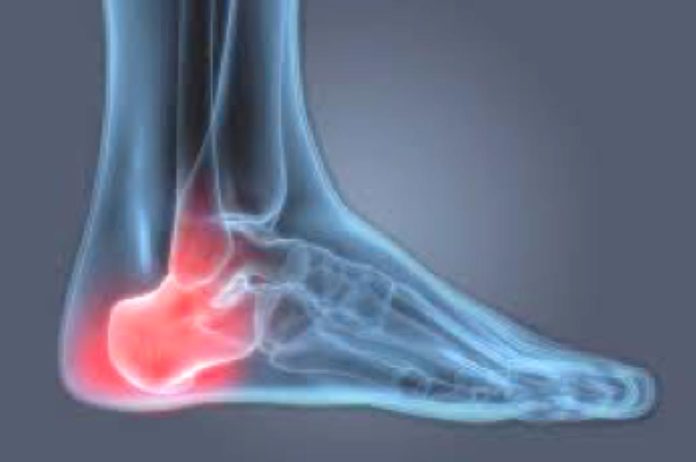If you wake up in the morning, step out of bed and feel excruciating heel pain, you are not alone. Millions of people suffer heel pain annually. It is the most common complaint foot and ankle surgeons hear. And while many assume that the condition only affects recreational or competitive athletes, anyone can suffer from heel pain!
So what causes heel pain? It is always important to rule out more serious causes of heel pain, such as a stress fracture, or pain associated with inflammation but for most people, the diagnosis is usually Plantar Fasciitis or the related condition Heel Spur Syndrome.
So what is Plantar Fasciitis and Heel Spur Syndrome?
Plantar Fasciitis is an inflammation caused by excessive stretching of the plantar fascia, a broad band of fibrous tissue which runs along the bottom surface of the foot, attaching at the bottom on the heel bone and extending to the forefoot. With Plantar Fasciitis, the bottom of your foot usually hurts near the inside of the foot where the heel and arch meet. The pain is often most acute both first thing in the morning and/or after prolonged rest, because while you rest, the plantar fascia cools down, contracting back to its original shape. It is least elastic at this time and most prone to injury.
Heel Spur Syndrome is a pulling away of the plantar fascia from its connection in the heel bone, causing calcium deposits to form as the body attempts to repair the damage. This results in the development of a bony protrusion or heel spur. Bone spurs themselves rarely cause discomfort. The pain that accompanies Heel Spur Syndrome is most often the result of the plantar fascia tearing away from its connection to your heel bone.
Summary – The key for the proper treatment of both Plantar Fasciitis and Heel Spur Syndrome is determining what is causing the excessive stretching of the plantar fascia. The most common cause is over-pronation, which is when the arch collapses under the weight of each step you take. Every time your foot strikes the ground, the plantar fascia is stretched. You can reduce the strain and stress by avoiding running on hard surfaces, losing any excess weight, and wearing shoes and orthotics that support your arch to prevent over-stretching of the plantar fascia.
3 TIPS: What can you do about it?
First, eliminate barefoot steps. If you have heel pain, the fewer unsupported steps you take, the better off you will be. For many of our clients, this simple act has the largest impact!
Second, an arch support appropriate for your foot type can be an effective way to reduce the arch collapse and allow the condition to mend.
Third, If you have particularly high arches, cushion the heel to absorb shock by wearing proper footwear that will accommodate and comfort the foot.






















